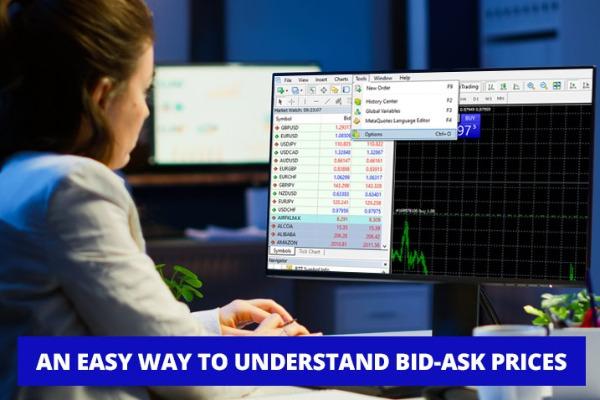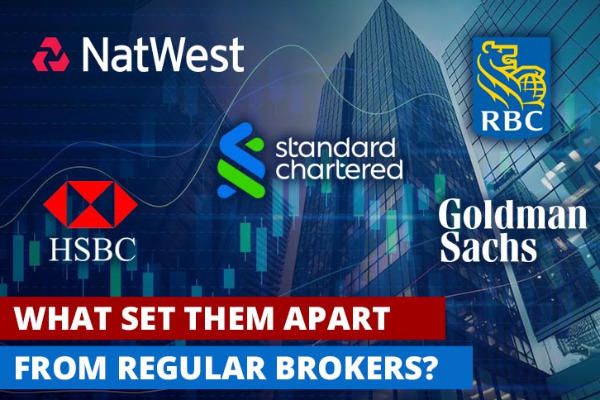Many said that leverage is like a double-edged sword. The higher it is, the higher the risks. Considering the popularity, is 1:500 leverage good for your trade?

Forex brokers offer various lengths of leverages, ranging from 1:5 to 1:1000 per trade. Yet, it's common knowledge that taking too high of leverage can be dangerous, so many traders opt to play safe.
Those still wanting to taste the advantage of using leverage typically choose 1:500 leverage as it's not too low or high. But the fact is, regulatory standards from practically all major countries decide that 1:30-1:50 is the maximum limit when it comes to leverage.
So, is it safe if we still want to trade with 1:500 leverage? The short answer is yes, only if you don't overtrade and are ready to face the risks and conditions. What are they?
To answer the question, let's first understand how trading with 1:500 leverage works.
Trading with 1:500 Leverage
Let's say a trader has $1000 in his deposit. If he uses a 1:1 leverage, it means that he can only trade with his own funds. So, if he has $1,000, then the maximum position that he can open is $1000.
However, if he uses a 1:500 leverage, then he can open a position of 500 times more volume than the capital he owns. Therefore, if he has $1000, then he can open a trade of up to $1,000 x 500 = $500,000.
Benefits of Trading with 1:500 Leverage
Leveraged trading can be good because of these several advantages:
- A Chance to Amplify Volume and Increase Profit
Using leverage could give traders an opportunity to increase their trading position and make a huge profit out of it. This means that a successful leveraged trade can produce a much higher profit than a regular winning trade. With only $1000, you could open a $500,000 trade if you use a leverage of 1:500. Should you make a profit from this trade, then the amount would be 500 times larger than you normally would with your initial $1000 funds. - Improving Capital Efficiency
Let's say you have a $10,000 deposit in your account. If you don't use leverage, then you need to use all of your money to open a $10,000 trade. However, if you use a 1:500 leverage, then you would only use $20. As a result, this gives you the opportunity to use the remaining $9,980 to trade other opportunities in the market. - Low Entry Level
Normally, there's not much to do if you only have a limited amount of capital in your account. You wouldn't be able to trade EUR/USD with $20 because usually, one standard lot is accounted for 100,000 currency units. If you want to open a EUR/USD trade at the price of 1.17470, then you would need at least 100,0000.01 x 1.17470 = $1174.70. However, there is an opportunity to open such a large position with only small capital if you use 1:500 leverage. Therefore, this gives a chance for small traders to participate in the market and get the same opportunity.
Watch Out for These Conditions
The concept of leverage must sound really attractive for many traders and indeed, it can bring many notable advantages in forex trading. However, it is important to understand that big profit is often associated with some risks. As such, you need to be careful of these conditions:
- Using high leverage like 1:500 may look profitable, but it is definitely risky even for professional traders. In fact, many countries like the US, Japan, and the EU forbid the use of such high leverage due to the unavoidable risk of losing. This is a part of the authority's attempt to protect clients from getting too much loss.
- The regulatory standards left many well-regulated brokers unable to provide 1:500 leverage. Those remaining with 1:500 leverage are usually licensed by offshore financial agencies which are considered less credible.
- If you want to use high leverage like 1:500, then you need to have sufficient skill as well as be experienced in the forex market. As if that's not hard enough, you also need to make sure that your trading style and strategy support the use of high leverage.
- Typically, higher leverages are more suitable for traders who open and close positions within a few hours because then, they could get maximum profit from short-term transactions. This is why high leverages are mostly popular among scalpers.
Bottom Line
High leverage allows small retail traders to make high returns from their trades. Although the number may sound pretty extreme for many people, it is perhaps the only way for small traders to access the forex market without risking too much money. When using leverage, practically anyone could join the market and even trade against big players like banks and hedge funds.
On the other side of the spectrum, we also need to consider the risks that come with high leverage. Using small leverage is actually risky enough for retail traders, let alone a big one like 1:500. Remember that leverage can magnify not only the potential profit but also the potential risk of your trade. It could increase the chance of your account being wiped out 500 times higher.
If you want to open a leveraged trade, you need to make sure that you understand how leverage works and how much leverage is suitable to you. The level of leverage you choose should depend on several factors such as your skill, experience, and risk tolerance in forex trading.
Apart from that, you also need to have a good risk management system. You could use a margin calculator to get the right amount of trade size, keep the positions small, use trailing stops, or limit the amount of money you use in each trade.
High leverage like 1:500 may not be suitable for any trader because of its extremely high risk. Without a good understanding of the market and a solid trading strategy, high leverage can make you lose money in no time. Therefore, if you want to keep your risk small, starting with 1:5 or 1:10 could be much safer.
But if you're a seasoned trader and know how to minimize the risks, then yes, 1:500 leverage is safe enough for you. If you're looking to do so, here's a list of brokers providing 1:500 leverage.

 Dedicated FREE FOREX VPS
Dedicated FREE FOREX VPS Free FOREX Virtual Private Server
Free FOREX Virtual Private Server MT4 Demo Contest, Get $500
MT4 Demo Contest, Get $500 Sign Up for an Account, Claim 60% Deposit Bonus
Sign Up for an Account, Claim 60% Deposit Bonus Free MT4/MT5 VPS 2024
Free MT4/MT5 VPS 2024 Send E-mail and Get Free Merchandise
Send E-mail and Get Free Merchandise $1K Refer a Friend Bonus for Pepperstone Pro clients
$1K Refer a Friend Bonus for Pepperstone Pro clients Maximize Your Earnings with 100% Deposit bonus
Maximize Your Earnings with 100% Deposit bonus Trade to Win, $5,000 Monthly Demo Contest
Trade to Win, $5,000 Monthly Demo Contest Claim 30% + 15% Deposit Bonus from LiteFinance
Claim 30% + 15% Deposit Bonus from LiteFinance












7 Comments
Paolo
Mar 2 2023
I totally get how Forex lets you use higher leverage, and I agree with the article that this can mean lower entries and affect your deposit. The example they gave was pretty spot-on. Basically, the more leverage you use, the less money you need to trade Forex.
But there's been something on my mind for a while now: how much money do you really need to start trading Forex? Can you get away with just the minimum deposit of, like, $100? Or do you need a huge chunk of change, like $100,000? What's the best amount of capital to have?
Andres
Mar 2 2023
Paolo: I think there's no exact answer to how much money you need to start trading Forex and how much money that suitable to do the forex because forex trading has leverage too that make us dont need many funds to do the forex. So, it depends on a lot of things like your personal situation and how you trade. Some folks start with just a few hundred bucks, while others like to have more cash on hand to cover losses.
Most people don't want to risk too much money on a single trade, usually just a small percentage of their account balance, like 1% or 2%. So if you have a $10,000 account, you might only want to risk $100 to $200 on any one trade. But it's up to you to decide what works best for you and your goals. For risk management and money management, you can read at here : Managing Risk at Trading Forex
Santana
Mar 2 2023
"In fact, top-tier financial regulatory bodies like FCA and ASIC have implemented a specific policy that prohibits trading providers under their watch to offer leverage higher than 1:50 or even 1:30."
I'm curious as to why regulators like FCA and ASIC have policies that limit leverage to a maximum of 1:50. Leverage is one of the features that attracts traders to Forex, and many brokers advertise their services with features such as low minimum deposits and high leverage. These features can help minimize the amount of funds required to trade.
Does this mean that trading with an FCA or ASIC-regulated broker is less attractive?
Gray
Mar 2 2023
Santana: Actually, regulators like the FCA and ASIC have policies that limit leverage to a maximum of 1:50 in order to protect traders from excessive risk. As you know, the Leverage is a powerful tool that allows traders to control larger positions with a smaller amount of capital. However, it can also amplify losses and lead to significant losses if not used carefully.
And by limiting leverage to 1:50, regulators aim to ensure that traders are not exposed to excessive risk and that they have sufficient funds to cover potential losses. This helps to protect both traders and the overall stability of the financial system.
So, like it or not, traders from FCA and ASIC only can traded with the broker that regulated in there. And for outsider, most broker that regulated with FCA and ASIC will use other regulator term as the other regulator less strict than FCA and ASIC.
Thiago
Mar 2 2023
After reading the article about high leverage 1:500, I think we need to trade forex with demo account first, especially for me as most of my brokers in my country offer leverage 1:500. for me, I don't feel leverage 1:500 will be more dangerous if we practice risk management and try not to be greedy, limit trading with risk/reward ratio and win rate.
I think either you use high leverage or low leverage, in fact forex trading is still high risk and you really need to think about your financial goals, risk tolerance and strategy your transaction. It is important to do your own research and be careful.
Andrew
Jan 23 2024
From my perspective, I'm still grappling with why a leverage of 1:500 is considered so risky. I mean, the article acknowledges that a 1:500 leverage can be optimal for traders seeking high risk and high returns. It emphasizes that high leverage enables small retail traders to yield substantial returns from their trades.
However, I'm curious about specific instances where high leverage is deemed dangerous. What I'm trying to grasp is how leverage can pose a risk. Could you illustrate this with a trading example, using numbers? The narrative about the dangers of leverage isn't entirely clear to me, so breaking it down with numerical examples would be really helpful.
Omar
Jan 26 2024
Greetings! Okay, let's break it down with an example to illustrate why high leverage, like 1:500, can be considered risky.
Imagine you have $1,000 in your trading account, and you decide to use a leverage of 1:500. This means you can control a position size of $500,000 ($1,000 multiplied by 500). Now, if the market moves in the direction you predicted, say by 1%, you could potentially make a profit of $5,000 (1% of $500,000).
On the flip side, if the market moves against you by 1%, you would incur a loss of $5,000. Here's the catch – your initial investment was only $1,000, but your losses are now exceeding your initial capital. This is the magnifying effect of high leverage.
While high leverage can amplify profits, it also significantly magnifies potential losses. In this example, a small market movement against your position wipes out your entire initial investment and then some.
The danger lies in the fact that with high leverage, traders can easily find themselves in a situation where a relatively modest market fluctuation can lead to substantial losses, potentially exceeding the initial amount invested. It requires a careful and disciplined approach to manage such risks effectively. For the article, you can read more about the leverage in here : Traps Hidden Under Forex Leverage And Margin